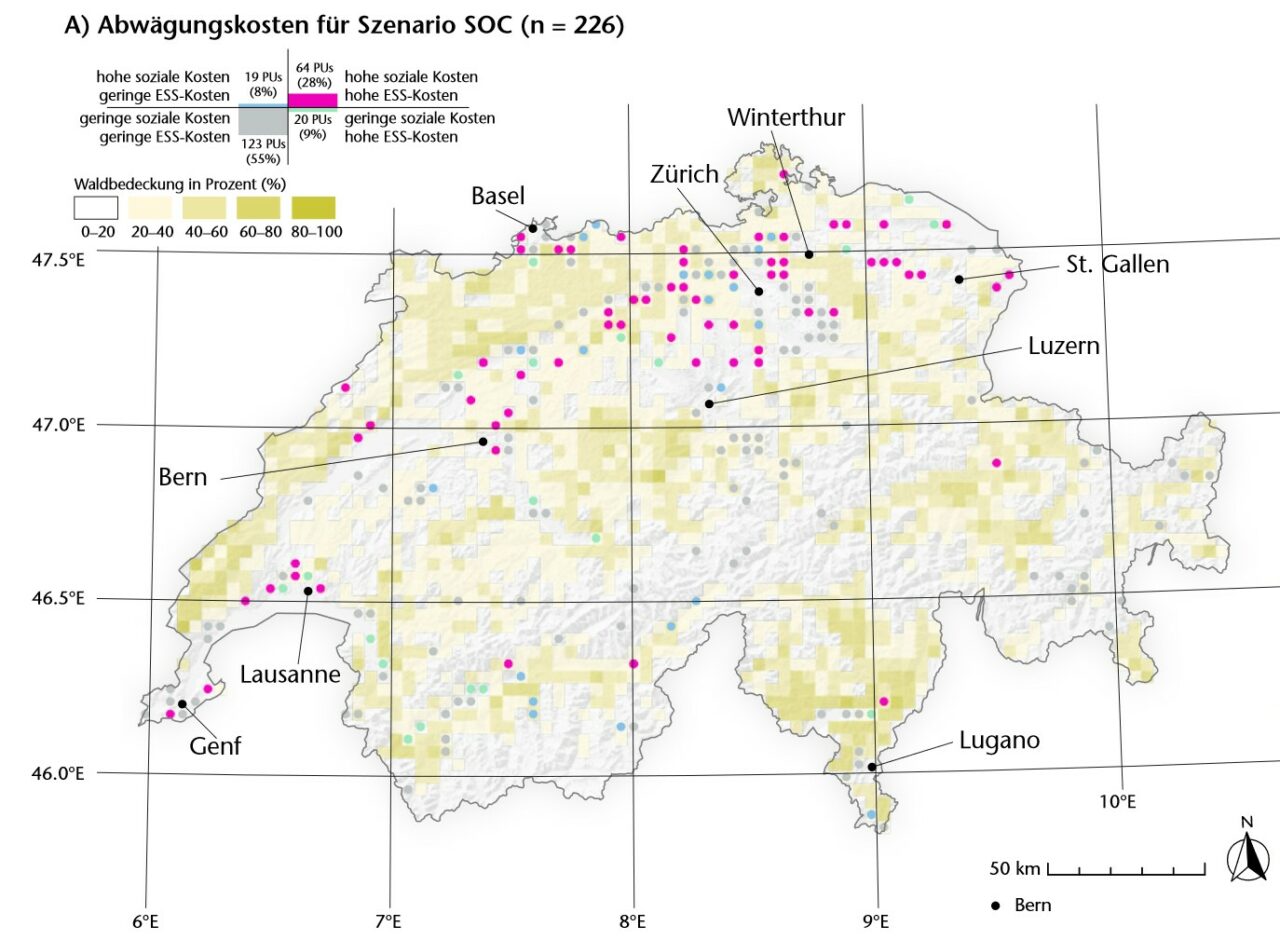
Boris Salak, Reto Spielhofer, Marcel Hunziker, Felix Kienast, Ulrike Wissen Hayek, Adrienne Grêt-Regamey
2024
Full text
The Swiss energy system is set to undergo a significant transformation through the integration of photovoltaic (PV) and wind energy installations, as outlined in the Energy Strategy 2050. However, these installations impact public perception of the landscape and may lead to conflicts with various socio-economic or ecological interests. Additionally, forests are increasingly considered as potential contributors to the energy transition.
To better understand the trade-offs between renewable energy production and other societal interests, this article demonstrates the contribution of spatial optimization models. Optimal sites are identified based on techno-economic, ecological, and social costs, with the associated trade-offs being integratively examined. Furthermore, the complex spatial relationships of renewable energy sites and other land use interests are elucidated. Finally, the effects of landscape transformation triggered by renewable energy infrastructure developments on societal preferences are highlighted. This holistic and comprehensive understanding can help decision-makers and planners better grasp the social, ecological, and economic impacts of their decisions and integrate this understanding into the planning of renewable energy projects.